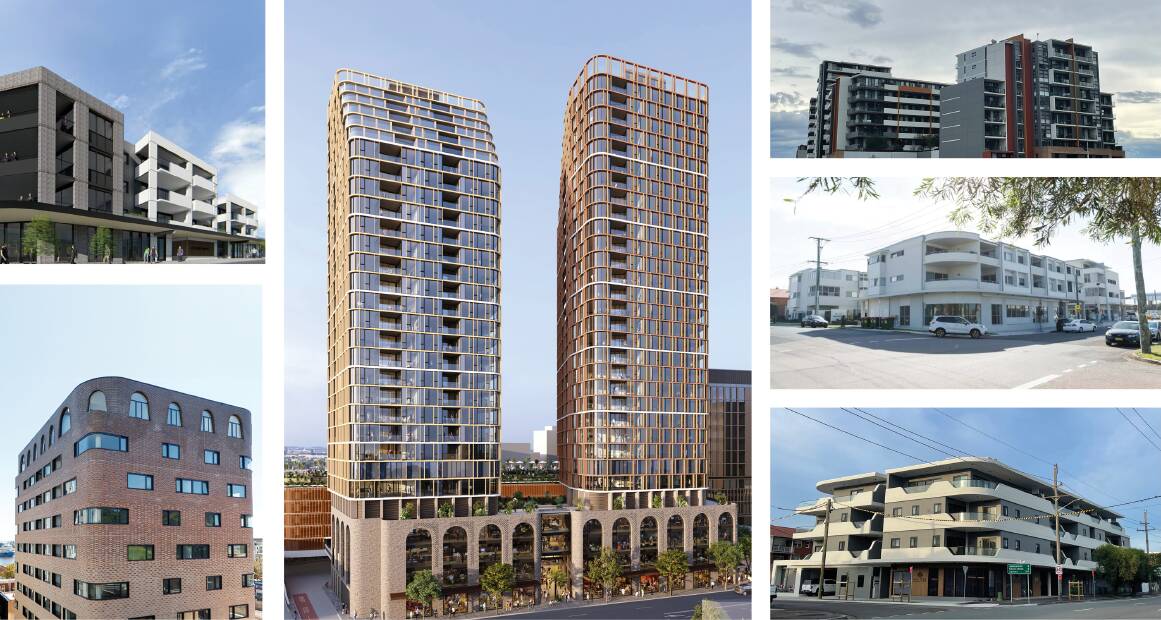
We need to lift our standards as we lift our density. Too many of our new apartment buildings and townhouses don't look good enough.
We can't keep filling Newcastle with towers, low-rise flats and medium-density homes that look plain or downright ugly and will look a good deal worse in 30 years.
Standards must improve, and not just in the city centre. Some of the recent buildings in the suburbs are simply eyesores. We know they didn't have to be, because others are pretty good.
People who want higher densities should consider that resistance to replacing houses with flats diminishes when the locals think the new construction is an attractive addition to their street, or at least not too bad a blemish.
This article doesn't need to reel off a list of nasties that have been built lately. Everyone has noticed some, thinking "surely they could have done better than that?"
"They" are not really the developers, who are quite entitled to build what they can get approved.
Rather, it's the approval process where we have to find a solution.
We should adjust the output of the experts whom we rely on in deciding whether to let a development go ahead. These experts, typically architects or urban planners, consider many factors.
We need them to be more demanding in the matter of building appearance.
Most development applications are looked at by such experts in local governments' design review panels. Councils then take the panels' advice seriously in deciding whether to let a project proceed.
Our bigger developments go upstairs to another panel, a regional one that's an agency of the Department of Planning and Environment. It doesn't advise whether to approve an application; it actually decides.
Even though the look of a building is subjective, unlike height and floor area, the process of following the assessments of experts is quite workable.
The minimum quality of urban design across the city is, in effect, the average of what these people think is minimally acceptable.
The process should also be adjustable.
A new guideline to the panels could be something along the lines of "Reject what you used to assess as barely passable, and consider rejecting what you used to assess as so-so". And if, a few years later, we find that the results are still not good enough, we can tell them to be even stricter.
An immediate problem is that the Labor state government is in no mood for authorities to say "no" to any housing development.
NSW doesn't have enough homes, so the government wants developers to encounter less, not more, trouble in getting on with construction.
But if developers know that standards for building appearance have risen, they can themselves avoid hassles in gaining approvals by telling their architects to do better and perhaps by accepting a little more expense in facade materials and fabrication.
They may also need to choose building shapes that yield a bit less saleable floor area.
They have little incentive to do that without regulation, because people hardly pay a premium to live in an attractive building.
Instead, the costs and benefits of bad or good external design are shared by everyone on the outside.
There's an old joke, used in many cities, that I've most recently heard in this form: "The best view of Paris is from the Montparnasse Tower. Why? Because it's the only place in Paris where you cannot see the Montparnasse Tower." (As you may guess, Parisians see little beauty in the obtrusive building.)
So we should be grateful to the developer Doma, its architects and the responsible authorities for the excellent design of The Store project in the West End. When its two towers, more than 50 per cent higher than our current tallest buildings, are complete in 2026, they'll be visible from all over inner Newcastle.
They'll also highlight the inadequacies of many city centre buildings that should not have been approved, including some that are still awaiting construction.
At the other end of the city centre, Iris Capital has done a fine design job with stages 1 and 2 of the development it annoyingly calls EastEnd (appropriating the customary name of a historic locality several hundred metres away). Its most praiseworthy building is Fabric House, with a fully brick facade and neatly inset alfresco spaces. That can't have been cheap to build, which is the answer to the question "Why can't all our buildings be that good?"
They don't have to be. But at least they must not be stinkers.
Charlestown is getting a bit of an architectural odour about it. Always a neglected place, cursed with traffic that should be on a bypass running alongside Glenrock, it's is steadily filling up with unremarkable or plain-ugly apartment blocks that exploit superb views from its ridge-top position.
Even judged by current standards, the design panels have done a poor job there. Charlestown should be treated much better.
Good looks are most important in such locations, where lots of people gather. And they're particularly important in buildings that, being tall, are most obtrusive.
But don't forget our residential back streets, where the heavy lifting in densification is happening. And the issue arises in townhouses, too.
For looks, low-density Australian suburbs are hard to beat: lots of trees, gardens, maybe hedges, and houses that sit back from the street. No wonder people frown when told that a row of bungalows will make way for a concrete structure that's two, three or four storeys high and will come close to the property line or even reach it.
We do have to densify the city, but to make the process more acceptable we must at least ensure that people won't look across the street at ugliness.







